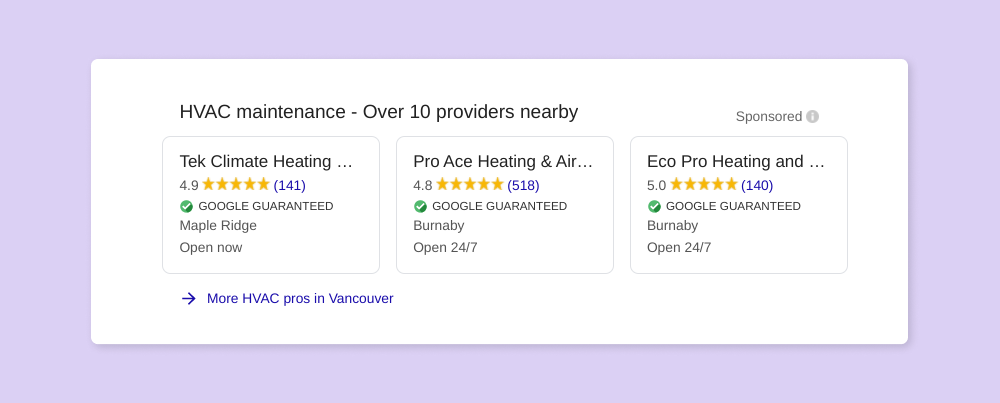How to Start a Landscaping Business: The Keys to Starting Strong
Embarking on the journey to start a landscaping business? This article offers a clear roadmap, outlining the critical first steps from market analysis to securing the necessary equipment and capital.
You'll learn the nuts and bolts of setting up your new venture, ensuring you’re well-prepared to tackle the landscaping industry without frills in our focused guide on how to start a landscaping business.
Key takeaways
-
To start a successful landscaping business, conduct thorough market research, create a comprehensive business plan, and ensure your business is properly registered and structured.
-
Financial planning is crucial, involving managing startup costs, equipment acquisition, budgeting, and pricing your services competitively to balance profitability with market competitiveness.
-
Obtain all necessary licenses, permits, and sufficient insurance coverage to protect your business from liabilities, and leverage both digital and traditional marketing strategies to attract and retain customers.
Laying the Foundation: Key Steps to Start a Landscaping Business

Initiating a landscaping business consists of vital steps such as carrying out market research, designing a detailed business plan, and establishing your business. Each of these steps lays the foundation for a successful landscaping business venture and provides the groundwork for future growth and profitability in the landscaping industry.
Your landscaping business plan should include the following:
-
Target Region - The areas you plan to serve
-
Solutions - The services you will offer
-
Specialization - Any specializations you might have
-
Equipment - The tools and equipment needed
-
Finances - Your budget
-
Advertising - A marketing strategy
Market Research and Identifying Your Niche
Market research is a significant phase in initiating your landscaping business. Understanding the local market, identifying service gaps, and determining your target audience can give you the insights needed to stay ahead of the competition and grow your small landscaping business.
Analyzing competitors’ offerings and prices can help identify service gaps in the local market, leading to new growth opportunities for your business.
Crafting a Comprehensive Business Plan
A business plan serves as a gateway to potential growth and secures the required funding to realize ambitious goals in the landscaping industry, particularly for a new business.
To create a powerful business plan for your landscaping business, include the following elements:
-
Executive summary
-
Target markets
-
Management skills and capabilities
-
Financial requirements
-
Pricing trends
-
Industry regulations
-
Projected national growth
-
Target demographics
-
Business description
-
Market analysis
-
Services or product line
-
Operations
Registering Your Landscaping Business
Establishing your own landscaping business is a significant phase in kick-starting your venture. This process involves choosing a unique business name, conducting a name search, and filing the necessary paperwork with the state’s secretary of state.
You also have the opportunity to choose from a range of dynamic business structures, including sole proprietorship, limited liability company (LLC), and partnerships which can be limited partnerships (LP) and limited liability partnerships (LLPs).
Embark on the journey to success with our innovative business plan!
Download the Business Blueprint
Financial Planning and Budgeting
Financial planning and budgeting are key aspects of initiating a landscaping business. It’s important to consider initial business expenses including acquiring essential equipment like a truck, trailer, mowers, landscaping tools, and safety gear.
You also need to secure funding for these startup costs. You can:
-
Use personal savings
-
Seek support from friends or family
-
Explore small business loans backed by your local Small Business Administration
-
Consider non-SBA loans from local banks.
Here are key aspects that small businesses should consider when engaging in financial planning and budgeting:
-
Revenue Projections: Estimate and project your expected revenue based on historical data, market analysis, and sales forecasts. Understanding your revenue streams is fundamental for creating a realistic budget.
-
Expense Management: Identify and categorize all potential expenses, including fixed costs (rent, utilities), insurance, licenses, permits, and variable costs (materials, labor). Regularly review and optimize your expenses to ensure efficient resource allocation.
-
Cash Flow Management: Monitor and manage cash flow effectively to ensure that you have enough liquidity to cover operational expenses. Identify periods of high and low cash flow to plan for potential challenges.
-
Debt Management: If applicable, manage any existing debts responsibly. Understand interest rates, payment schedules, and the impact on your overall financial health. Consider debt reduction strategies to improve cash flow.
-
Financial Goals: Set clear financial goals for your business. Whether it's achieving a certain level of revenue, profitability, or market share, having specific goals helps guide your financial decisions and assess your business's performance.
-
Emergency Fund: Establish an emergency fund to cover unforeseen expenses or disruptions. Having a financial buffer can help your business weather unexpected challenges without jeopardizing its stability.
-
Budget Variance Analysis: Regularly compare actual financial results with your budgeted figures. This allows you to identify any deviations, understand the reasons behind them, and adjust your future plans accordingly.
-
Investment Planning: Assess potential investments in equipment, technology, marketing, or personnel. Evaluate the return on investment (ROI) for each investment to ensure it aligns with your business goals.
-
Tax Planning: Stay informed about tax regulations and incentives applicable to your business. Strategically plan for tax obligations, deductions, and credits to optimize your tax position.
-
Contingency/Risk Planning: Develop contingency plans for unforeseen events, such as economic downturns, changes in market conditions, or disruptions to your supply chain. Being prepared for uncertainties can mitigate their impact.
-
Regular Financial Review: Schedule regular financial reviews to assess your business's financial health. This includes analyzing financial statements, evaluating key performance indicators, and adjusting your financial plan as needed.
-
Professional Advice: Consider seeking advice from financial professionals, such as accountants or financial advisors. Their expertise can provide valuable insights and guidance for effective financial planning tailored to your specific business needs.
Startup Costs and Equipment Acquisition
Startup costs for a landscaping business can vary, with smaller-scale operations ranging from $39,500 to $43,500, and larger-scale businesses possibly requiring $250,000 or more. Having a clear budget and financial planning will help to provide a picture of your startup cost.
You can acquire equipment through outright purchase or by renting, enabling you to make the best choice based on your budget constraints and equipment needs.
Pricing Your Services Competitively
Determining the prices for your landscaping services is a vital phase in guaranteeing your business’s profitability and competitiveness. Your Financial Plan will aid in providing an idea of what is the lowest and best competitive pricing you can offer for your services.
You can research what other landscaping companies are charging for similar services in your area, which will help you determine a competitive price for your services.
Obtaining Licenses, Permits, and Insurance

Before officially initiating your landscaping business, it is necessary to secure the required licenses, permits, and insurance. Each state has its own unique landscaping licensing requirements.
Business Licenses and Permits
Obtaining the required business license and permits for ensures that your lawn care business or landscaping business complies with state and local regulations.
The process involves checking with your state licensing department, setting up the business entity, and creating a Federal and State registration.
Securing Adequate Insurance Coverage
Insurance is crucial in protecting your landscaping business. Landscaping insurance, such as general liability insurance, provides coverage for bodily injury, property damage, and other liabilities that the business may be accountable for.
Equipment insurance shields you from the financial burden of repairing or replacing business equipment and tools in case of loss, theft, or damage.
Beyond licenses and permits, securing the following types of business insurance is necessary to shield your business from potential risks and liabilities:
-
General Liability Insurance: protects businesses from financial loss due to claims of property damage, bodily injury, or personal injury arising from the company's operations, products, or services.
-
Business Property Insurance: Also known as commercial property insurance, this policy safeguards a business's physical assets, such as buildings, equipment, inventory, and furniture, against risks like fire, theft, vandalism, and natural disasters. It helps cover repair or replacement costs in case of damage or loss.
-
Business Owner’s Policy: It typically combines general liability insurance and property insurance, offering a cost-effective solution for protecting a business against various risks in one bundled policy.
-
Workers’ Compensation Coverage: Insurance that provides financial protection to employees who suffer work-related injuries or illnesses. It covers medical expenses, rehabilitation costs, and a portion of lost wages for employees, and, in return, protects employers from lawsuits related to workplace injuries.
-
Equipment Breakdown Coverage: Also known as Boiler and Machinery Insurance, this is a policy that protects businesses from financial losses incurred due to the sudden and accidental breakdown of equipment. It covers repair or replacement costs, business interruption, and other related expenses resulting from equipment failures.
Effective Marketing Strategies for Your Landscaping Business
Once your landscaping business is established, the subsequent phase involves attracting customers to your landscape business. This can be achieved through a combination of digital and traditional marketing strategies.
Word-of-mouth marketing is a powerful tool for landscaping businesses. Satisfied customers share their experiences, and provide reviews which can attract new clients effectively. Here is how a small business increased its online reviews.
Boost your business reputation effortlessly with our cutting-edge reputation marketing app!
Drive customer engagement, enhance credibility, and watch your business thrive. Don't just manage your reputation, maximize it!
Get 4x Reviews
Digital Marketing Tactics
Maintaining a website for your landscaping business is essential as it displays services, projects, and contact information, and assists in appealing to potential customers.
Social media platforms like Instagram, Facebook, and Twitter are great for marketing your landscaping business. Their wide audience reaches and visual content features make them perfect for showcasing your landscaping skills and attracting more clients.
Traditional Advertising and Networking
Traditional advertising methods like print advertising, direct mail, networking, and handing out flyers can also be effective in promoting your landscaping business.
Networking is a great way to directly engage with potential clients and industry professionals, build strong relationships, and promote your services in more personal and interactive settings.
Building a Skilled Team and Ensuring Workplace Safety
Maintaining a proficient team is important for providing top-quality lawn maintenance services and maintaining a robust reputation in your landscaping business.
You can also significantly impact employee retention by providing competitive wages and benefits and keeping your valuable team members motivated and committed to your business’s success.
Hiring and Training Employees
Assembling a first-rate team of landscape professionals requires individuals with licenses and certifications, technical expertise, and hands-on experience in the physical demands of landscaping work.
Breakthrough Academy offers content in the form of podcast and videos that will be great learning tools for you and your team.
Promoting a Safe Work Environment
Establishing a safe work environment in the landscaping industry is compulsory. It can help:
-
Prevent accidents
-
Lower insurance premiums
-
Reduce injuries
-
Minimize downtime
-
Improve the workplace culture and atmosphere.
It’s important to provide your team with proper training and the right tools and to make sure everyone follows safety regulations diligently.
In conclusion...
Starting a landscaping business involves a strategic blend of planning, registration, budgeting, and marketing. Each step is crucial to setting up a successful business, from conducting market research to crafting a comprehensive business plan, registering your business, and marketing it effectively.
With the right approach, starting a landscaping business can be a rewarding venture. It provides the opportunity to work outdoors, create beautiful landscapes, and build a profitable business that truly makes a difference in people’s lives.
Frequently Asked Questions
How profitable is owning a landscaping business?
Owning a landscaping business can be very profitable, with operating profit margins ranging between 12% and 35%. This margin represents the money you take home after deducting operating costs such as labor, material, equipment, and overhead costs.
How do I start a landscaping side hustle?
To start a landscaping side hustle, begin by gaining experience, building a portfolio, choosing a business name, listing your services, and acquiring the necessary equipment. Then, set your rates, create a strong brand, and register your business. Good luck!
What are the cons of owning a landscaping business?
While owning a landscaping business can be rewarding, it also comes with challenges such as seasonal fluctuations in demand and the physical demands of the work. Be prepared to navigate these obstacles with resilience and adaptability.
How do I start a landscaping business plan?
To start a landscaping business plan, choose a business name, create a business plan, list your startup expenses, get the necessary licenses and permits, protect your business with landscaping insurance, and promote your services.
Additionally, consider including an executive summary, business description, market analysis, services or product line, operations and management, marketing and sales, and financial factors in your plan.
It's also important to outline the areas you plan to serve, services you plan to offer, any specializations you might have, tools and equipment needed, budget, and a general idea of how you plan to market your business.
What is the first step in starting a landscaping business?
The first step in starting a landscaping business is to conduct market research to understand your local market, identify service gaps, and determine your target audience and niche. This will help you make informed decisions and set a solid foundation for your business.




